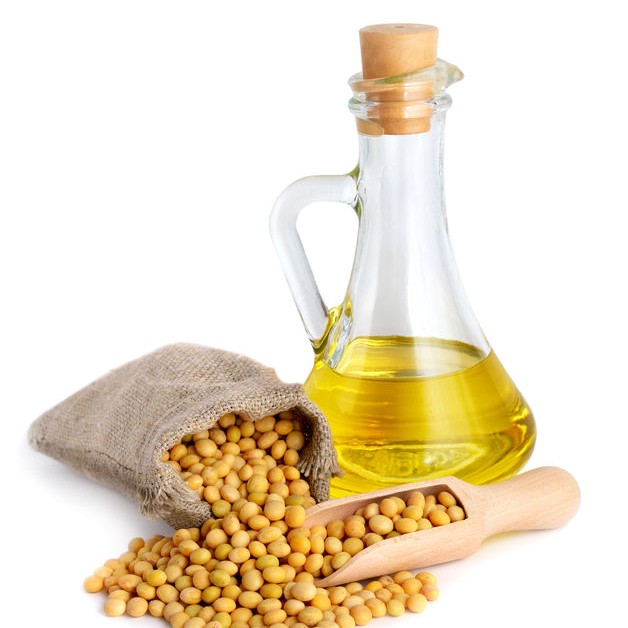
Emulsifier Alternative
What is an Emulsifier Alternative?
An emulsifier alternative is a dough strengthener or crumb softener, usually originated from enzymes, plant protein and/or hydrocolloids. They can be used partially or totally to replace traditional emulsifiers and function the same way for a clean label. Examples of emulsifier alternatives are:
- Transglutaminase
- Plant protein
- Hydrocolloids
Why use an emulsifier alternative?
Synthetic emulsifiers have been reported to be able to increase intestinal permeability, favoring the incidence of allergic and autoimmune disease.1 As inhibition of intestinal barrier dysfunction is recommended for celiac disease treatment, reduction or elimination of synthetic emulsifiers from gluten-free bread could benefit the intestinal health of celiac patients.1 The emulsifier alternatives could be used to replace synthetic emulsifier and provide a clean label product.
Origin
The enzyme, transglutaminase, is produced from fungal fermentation. Plant protein and hydrocolloids are extracted from plants.
Function and application
The following can be used as an emulsifier alternative:
- Transglutaminase (TGase)
- Plant protein
- Hydrocolloids
- Maple fiber
Transglutaminase
Transglutaminase (TGase, protein-glutamine gamma-glutamyltranferase, EC 2.3.2.13) catalyses acyl transfer reactions, crosslinking between protein intra- or interchain glutamine (acyl donor) and lysine (acyl acceptor) peptide residues.2
TGase is produced commercially via traditional fermentation by the microorganism Streptoverticillium moboarense. The enzyme acts in wide ranges of pH and temperature (pH 5.0-8.0, optimum temperature of 50oC, but with activity between 40 and 70oC), is Ca2+ independent, and its activation requires no special cofactors.2
The emulsifying and foaming properties (related to protein solubility) of wheat gluten can be improved by TGase treatment.3 TGase was applied to chiffon cake baking. The treatment of 0.5% TGase in the yolk batter portion significantly increased its emulsion activity. The addition of 1.0% TGase in the yolk batter portion significantly increased both foam stability and emulsion activity of cake batter.4
TGase can be especially used in the gluten free baking products. It can promote protein cross-linking. It has been proved to enhance the baking characteristics as well as overall macroscopic appearance of buckwheat bread and brown rice bread.2 Adding TGase to the gluten free batter prepared from pregelatinized cassava starch, sorghum and egg white increase crumb firmness and chewiness of the bread.5 The protein source is a key element determining the impact of the enzyme. TGase has no effect on breads from oat, sorghum or teff.1
Plant protein
Proteins are important emulsifiers in food emulsions due to their surface properties. The ability of a protein to form and make an emulsion stable depends on an adequate balance between its molecular size, charge, surface hydrophobicity and molecular flexibility. Protein acts as emulsifiers by forming a film or skin around oil droplets dispersed in an aqueous medium, thereby, preventing structural changes such as coalescence, creaming, flocculation or sedimentation.
Both soybean protein isolate and soybean protein extract show good emulsifying functions. Pulse, including pea, chickpea, lentil, bean, their protein also has emulsifying properties. Among them, chickpea protein has the best emulsifying properties. Enzyme or chemical modified protein, which are less hydrophobic, may have better emulsifying properties.
Chickpea flour has been used in gluten-free batters, together with tiger nut flour, to replace emulsifier and shortening. Chickpea flour increased the bread specific volume. Bread elaborated with both chickpea and tiger nut flour maintained its baking characteristics (bake loss, specific volume, crust and crumb color and crumb hardness) even when shortening and/or emulsifier were reduced or eliminated.1
Lupin flours has been used in bread making. The substitution level that provided the best bread quality for whole lupin flour was maintained up to 5%; thereafter decreasing in quality attributes.6 The detrimental effects at higher substitution levels appeared to be associated with the nonprotein components of the lupin flour.
Hydrocolloids
Preparation of emulsions and control of emulsion shelf life are the key functional roles of food hydrocolloids. Hydrocolloids make good stabilizing agents because of their hydrophilicity, high molecular weight and gelation behavior which leads to the formation of macromolecular barriers in the aqueous medium between dispersed droplets. The most widely used hydrocolloids emulsifiers in food applications are gum Arabic, modified starches, modified celluloses, some kinds of pectin, and some galactomannans. Gum arabic that is widely used in citrus drinks.
FDA Regulation
Transglutaminase, lupin flour and gum arabic have been recognized as GRAS substances by the FDA.
References
- Aguilar, Núria, Elena Albanell, Begoña Miñarro, and Marta Capellas. “Chickpea and Tiger Nut Flours as Alternatives to Emulsifier and Shortening in Gluten-free Bread.” LWT – Food Science and Technology 62.1 (2015): 225-32.
- Gaspar, Ana Luisa Camolezi, and Silvana Pedroso De Góes-Favoni. “Action of Microbial Transglutaminase (MTGase) in the Modification of Food Proteins: A Review.” Food Chemistry 171 (2015): 315-22.
- Agyare, Kingsley K., Kwaku Addo, and Youling L. Xiong. “Emulsifying and Foaming Properties of Transglutaminase-treated Wheat Gluten Hydrolysate as Influenced by PH, Temperature and Salt.” Food Hydrocolloids 23.1 (2009): 72-81.
- Wang, Feng, Weining Huang, Patricia Rayas-Duarte, Hongzi Wang, and Qibo Zou. “Baking Characteristics of Chiffon Cake as Influenced by Microbial Transglutaminase.” Cereal Chemistry 90.5 (2013): 463-68.
- Onyango, Calvin, Christopher Mutungi, Günter Unbehend, and Meinolf G. Lindhauer. “Rheological and Baking Characteristics of Batter and Bread Prepared from Pregelatinised Cassava Starch and Sorghum and Modified Using Microbial Transglutaminase.” Journal of Food Engineering 97.4 (2010): 465-70.
- Pollard, N. J., F. L. Stoddard, Y. Popineau, C. W. Wrigley, and F. Macritchie. “Lupin Flours as Additives: Dough Mixing, Breadmaking, Emulsifying, and Foaming.” Cereal Chemistry 79.5 (2002): 662-69.
- “GRAS Notices.” Accessdata.fda.gov. www.accessdata.fda.gov/scripts/fdcc/index.cfm?set=GRASNotices&sort=GRN_No&order=DESC&showAll=true&type=basic&search=. Accessed 23 Feb. 2017.

